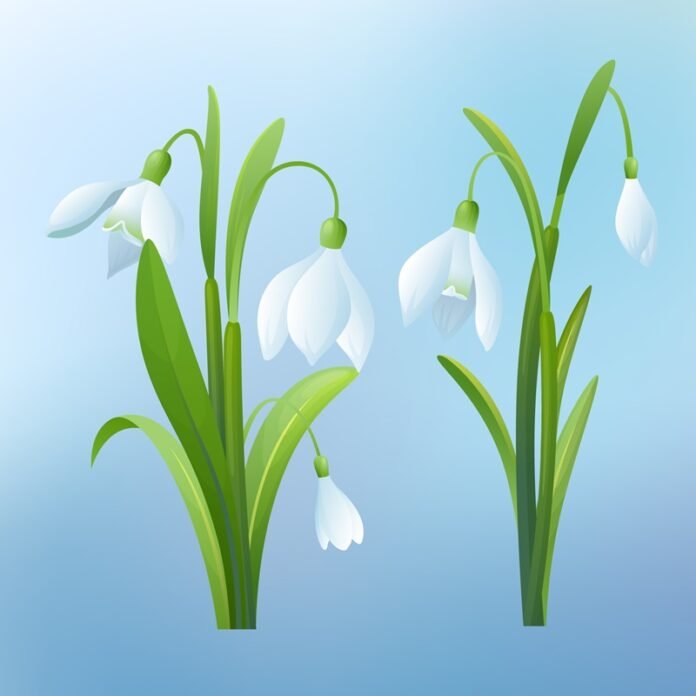Lily of the Valley (Convallaria majalis) is a beautiful and fragrant plant that is often cherished for its aesthetic appeal. However, it is crucial to understand that Lily of the Valley is highly poisonous. This article aims to provide comprehensive information on the toxicity of Lily of the Valley, symptoms and treatment of poisoning, safety measures, and emergency response procedures.
What Makes Lily of the Valley Poisonous?
Toxic Compounds
Lily of the Valley contains cardiac glycosides, primarily convallatoxin, convallamarin, and convallatoxol. These compounds affect the heart by increasing the force of heart contractions and altering heart rhythms, which can be dangerous if ingested in large amounts.
Parts of the Plant
All parts of the plant, including the flowers, leaves, stems, and even the berries, are poisonous. The berries, in particular, pose a significant risk to children and pets due to their attractive appearance.
Mechanism of Toxicity
The cardiac glycosides in Lily of the Valley inhibit the sodium-potassium ATPase enzyme, leading to an increase in intracellular calcium levels in the heart muscle cells. This can result in increased cardiac contractility and potential disturbances in heart rhythm, making the plant highly toxic.
Symptoms and Treatment of Poisoning
Symptoms of Poisoning
- Gastrointestinal Symptoms: Nausea, vomiting, diarrhea, and abdominal pain are common initial symptoms.
- Cardiovascular Symptoms: Irregular heartbeats (arrhythmias), slow heart rate (bradycardia), or fast heart rate (tachycardia) can occur.
- Neurological Symptoms: Dizziness, confusion, headache, and seizures may also be present.
- Other Symptoms: Blurred vision, halos around objects, and excessive salivation.
Treatment of Poisoning
- Immediate Action: If ingestion is suspected, contact a poison control center or seek emergency medical help immediately.
- Activated Charcoal: In a medical setting, activated charcoal may be administered to absorb the toxins if the ingestion was recent.
- Intravenous Fluids: To maintain hydration and support cardiovascular function.
- Antiarrhythmic Drugs: Medications may be used to treat irregular heartbeats.
- Supportive Care: Monitoring and supportive care in a hospital setting are crucial, especially for severe cases.
Safety Measures and Childproofing
Childproofing Your Garden
- Education: Teach children about the dangers of certain plants and ensure they understand not to touch or eat any part of the Lily of the Valley.
- Physical Barriers: Use fences or barriers to keep children and pets away from areas where Lily of the Valley is planted.
- Signage: Place warning signs in the garden to alert visitors to the presence of poisonous plants.
Pet Safety
- Awareness: Be aware that pets, particularly dogs and cats, may be attracted to the plant. Keep an eye on pets when they are outdoors.
- Safe Planting: Consider planting Lily of the Valley in areas that are inaccessible to pets.
Handling Lily of the Valley Safely
Protective Gear
- Gloves: Always wear gloves when handling Lily of the Valley to avoid skin contact with the plant’s sap, which can cause irritation.
- Washing Hands: Wash hands thoroughly after gardening or handling the plant to remove any traces of toxins.
Safe Disposal
- Proper Disposal: Dispose of any trimmings or plant debris safely, ensuring that they are not accessible to children or pets.
- Composting: Avoid composting parts of the Lily of the Valley, as the toxins can persist and contaminate the compost.
Poison Control and Emergency Response
Poison Control Contact Information
- Hotline: Keep the phone number of your local poison control center readily available. In the United States, the Poison Help hotline is 1-800-222-1222.
- First Aid Knowledge: Familiarize yourself with basic first aid measures for poisoning cases.
Emergency Response Steps
- Stay Calm: Try to remain calm and assess the situation.
- Identify the Plant: Ensure that the plant ingested is indeed Lily of the Valley.
- Call for Help: Contact poison control or emergency medical services immediately.
- Follow Instructions: Follow the instructions provided by the poison control center or medical professionals.
Safe Plants That Look Like Lily of the Valley
Lily of the Valley (Convallaria majalis) is a beautiful but highly toxic plant. If you’re looking for safe alternatives that resemble Lily of the Valley, consider the following options:
1. Astilbe (Astilbe spp.)
- Description: Astilbe has fern-like foliage and feathery flower plumes that can resemble the delicate look of Lily of the Valley flowers.
- Safety: Non-toxic to pets and humans.
2. Solomon’s Seal (Polygonatum spp.)
- Description: Solomon’s Seal features arching stems with bell-shaped flowers hanging underneath, which can give a similar appearance to Lily of the Valley.
- Safety: Non-toxic to pets and humans.
3. Sweet Woodruff (Galium odoratum)
- Description: This ground cover has small white star-shaped flowers and a similar growth habit, creating a visual resemblance to Lily of the Valley.
- Safety: Non-toxic to pets and humans.
4. False Lily of the Valley (Maianthemum dilatatum)
- Description: Often called False Lily of the Valley, this plant has similar broad leaves and small white flowers, mimicking the look of its toxic counterpart.
- Safety: Generally considered non-toxic, but it’s always best to confirm with local guidelines.
5. Lilyturf (Liriope muscari)
- Description: While the flowers of Lilyturf are more spike-like, the plant’s overall appearance and its ability to cover ground make it a viable and safe alternative.
- Safety: Non-toxic to pets and humans.
6. Bugleweed (Ajuga reptans)
- Description: Bugleweed offers a ground cover with small blue or white flowers. While it doesn’t have the exact look of Lily of the Valley flowers, its growth habit can create a similar effect.
- Safety: Non-toxic to pets and humans.
When choosing plants, always verify their safety with local plant guides or a vet, especially if you have pets or children who might come into contact with them.
Conclusion
Lily of the Valley is a highly poisonous plant, and understanding its toxicity is crucial for ensuring safety. By recognizing the symptoms of poisoning, taking preventive measures, and knowing how to respond in an emergency, you can enjoy the beauty of Lily of the Valley while minimizing the risks associated with its toxicity. Always handle the plant with care and educate others about its potential dangers to create a safe environment for everyone.
FAQs:
Yes, many types of lily flowers are poisonous to humans if ingested. While touching them generally doesn’t cause harm, consuming any part of the plant can lead to serious health issues.
Lily of the valley is highly poisonous. All parts of the plant contain cardiac glycosides, which can cause symptoms such as nausea, vomiting, abdominal pain, irregular heartbeats, and even death if ingested in large amounts.
Smelling lily of the valley is generally safe and poses no health risks. The toxicity of the plant is a concern when ingested, not when inhaling its fragrance.
Yes, it is okay to touch lily of the valley, but it is important to wash your hands afterward to avoid accidentally ingesting any toxic parts of the plant. Gloves are recommended when handling the plant, especially if you have sensitive skin.
Eating a lily can lead to severe symptoms such as nausea, vomiting, diarrhea, abdominal pain, and potentially more severe effects like heart arrhythmias and organ failure, depending on the type of lily and the amount consumed.
Yes, ingesting lilies can make you feel sick, causing symptoms like nausea, vomiting, and diarrhea. Even handling some types of lilies and then touching your face or mouth can potentially cause irritation or mild symptoms.








